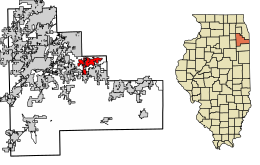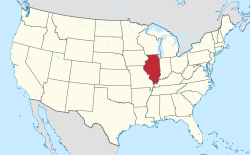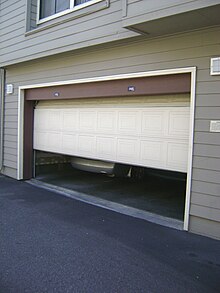What kind of garage door Opener and Door Do You Have? .
What is the #1 Thing You Must Do If Your Garage Door Stops Functioning? - pressure
- screen reader
- Zumba
- pressure
Roll-up garage doors commonly used in commercial settings comprise the slats, which are rolled into a coil.
The tilt-up door on the contrary is a solid single piece that opens by tilting inward and upwards.Belt drive garage door openers have a lower noise, but they use an elastic band instead of a chain. They're an excellent option for garages that have attached garages. Screw-drive garage door openers use a steel threaded rod for moving the garage door. This is the perfect combination of noise and cost.
Once you have identified your garage door's opener type the next step is to conduct a a basic check for common issues.Ensure that the power source is connected to the opener checking the plug as well as the breaker.Inspect the release cord for manual to be sure that it's not pulled, which would disengage the door from the opener.Examine the door's tracks and rollers for any obstructions or damaged areas and clean any debris.
Lubricate moving parts if necessary because a lack of lubrication can lead to jamming or sticking.Resetting the opener will fix any electronic malfunctions. Consult the manual of the model you are using to learn the exact steps. Certain openers can be reset with a push of the button, whereas others require that the unit be disconnected and after that, it must be re-plugged.
In a few cases, the issue might be more complex such as a broken spring or worn-out motor, which would require professional assistance.Springs are subject to significant tension and are dangerous to repair without the appropriate tools and expertise.
If the garage door stops working then you need to speak with an expert.
Look for any obstructions or other debris
It can be a bit frustrating and perplexing when your garage door ceases to function abruptly, particularly if you are using it daily.
One of the basic and most useful steps to undertake when faced in this scenario is to look for obstructions or debris.This simple, yet powerful action can be a key in identifying the issue and returning functionality to your garage door.Garage doors are based on a system of rollers, tracks, as well as other parts that need to be free of hindrances to function smoothly.Over time dirt, leaves, small stones, or other debris can build up along the tracks, or get trapped in the rollers.Even an obstruction of a tiny size can stop the door from opening or closing properly.Therefore an inspection thorough of these components should be the first step.
Begin by examining the tracks on both the right and left sides of the door. Look for obvious obstructions or buildup. If you notice anything strange, like an acorn, or a rock that is stuck within the track. Remove it carefully.
The issue might not always be visible. To check if the problem is still present, move your fingers down the track. Also, make sure that the tracks are properly aligned. Misalignment can also cause the door jam. Next, inspect the rollers as well as hinges.These parts should be able to move without resistance.If they're sticky or stuck, it might be a sign of the accumulation of dirt or rust.In situations like this, cleaning and lubricating them is often a solution to the issue.Use a soft cloth or brush to clean any dirt and apply a suitable oil to ensure that they move freely.
What is the #1 Thing You Must Do If Your Garage Door Stops Functioning? - screen reader
- drill
- FAQ
- Democratic Party
It's also crucial to examine the area around the door itself.Sometimes things that are kept in the garage could accidentally move or fall, blocking the route of the door.Ensure that the area is clear and that nothing is blocking the door's movement.
If, even after clearing any obvious obstructions, your door continues to refuse to open take a look at the sensors.
The sensors of modern garage doors may malfunction in the event that they're dirty or not aligned correctly.By keeping your walkway clean and by avoiding obstacles, you will stay clear of having to call a professional fix a problem that is typically simple.
Check the remote control and Wall Switch
If the garage door stops functioning, it can be an unexpected problem that interrupts your normal routine.In such instances it's normal to feel the need to resolve the issue quickly.One of the initial and most efficient steps you can take is to inspect the remote control as well as the wall switch.
Examining these components can help you save time and prevent costly mistakes.First, consider the remote control.This handheld device is your primary tool for operating the garage door without direct physical interaction.Over time, remote controls can experience issues such as drained batteries, signal interference, or even internal damage.Start by replacing the batteries with new ones.It might seem simple, but dead batteries are a common reason for a garage door not responding.If the problem persists after replacing the batteries, try reprogramming the remote according to the manufacturer's instructions.Additionally, ensure that the remote is within the recommended range and that there are no obstructions blocking the signal.
The wall switch is also an essential component of the garage door's system.
If you're comfortable you are comfortable, then open the switch to inspect for broken or missing wires.The remote control or wall switch could be functioning properly, but the door is still not working. This could be a sign of that there is a problem with the garage opener unit or with other components such as sensors or door tracks.
You can eliminate these issues before moving on to more complex troubleshooting.The initial check will reduce time and provide assurance that you've done the right thing to identify the issue.
Test the door balance manually
It can be a hassle and frustrating when your garage door stops working. The garage door is an essential component of your home as it gives you security, protects against elements, as well as the ability to access your car as well as storage.
Testing the balance manually on the garage door can be crucial step to take should your door be malfunctioning. This simple but effective method can help you identify any potential problems and prevent any further damage.Balance of the garage door is critical to its correct operation. A door that isn't balanced could cause more serious problems such as misalignment, broken springs.
Start by disengaging the garage door opener.
Most garage doors have an release mechanism, usually a red cord or handle which allows you to disengage the door from the motor.Once the door is unlocked, carefully lift it manually to about waist height, then let it go. it.A well-balanced door will remain in place, or move slowly.If the door begins to fall rapidly or shoots upwards the floor, it could indicate an imbalance.It is recommended to speak with a professional to help you adjust the springs in order to ensure that the garage door is in a balanced state. This is not just going to fix the issue however, it will also enhance the life span and longevity of your door.
In conclusion, manually checking the door's balance is an essential first step to take when your garage door stops working suddenly.
This procedure helps to determine the root of the problem, which could be in the door's balance or elsewhere in the system.By understanding the importance of balancing your door and taking care to address any issues quickly, you can prevent future damage and ensure that your garage door functions efficiently and safely for many the years to be.Tracks and Rollers
When confronted with a garage door that is suddenly refusing to open, your initial reaction is likely to be worry or consider the most complex technical issues.However usually, the solution lies in a simple inspection of the tracks and rollers.This fundamental check can make a difference in time and costly repair costs which is why it's the first that you must prioritize in the event that your garage door ceases functioning.
The rollers and tracks are the key elements of the garage door's operation system.The tracks comprise the metal rails that guide the door as it opens and closes. The rollers are the small wheels which move along the tracks.
These parts can be worn out, dirty or even misaligned with time. This could cause problems with the operation.Begin by visually inspecting the tracks for obstructions.Dust or grime and even small debris can accumulate on the tracks, leading the rollers' to be hampered as they travel along the path.Cleaning the tracks using a damp cloth can often help to solve these issues.Make sure you dry them thoroughly afterward in order to avoid rust.
The next thing to do is to examine the alignment of the tracks. Tracks must be parallel and perfectly straight. If they appear bent, or not in alignment, the door could jam. It is possible to press the wrongly aligned section back into position with the mallet made of rubber. If damage is severe, it's recommended to consult professionals who can re-align the tracks properly.
Rollers are prone to wear out with time. This is particularly true for those made of plastic.
Metal rollers with bearings are more durable and allow for an easier operation.Additionally, lubrication plays a vital role in maintaining smooth movement of the tracks and rollers.Applying an lubricant based on silicone can decrease friction and reduce wear.Make sure to grease every moving part, including springs and hinges to make sure that your garage door is operating efficiently.
By ensuring that these components are well-lubricated and aligned it is possible to get the garage door back to its complete functionality.
The time taken to periodically check and maintain the parts will help avoid problems in the future, and prolong the lifespan of the garage door system.Check for visible damage or wear
It's frustrating and annoying when garage doors stop working suddenly, especially if you're heading home or trying to secure your home for the night.
The garage door is a complicated system composed of numerous elements, including springs cables track, rollers, and tracks all of which play essential roles in its seamless operation.Over time, these parts will wear out from regular usage and exposure to the environmental elements.
By conducting a thorough visual examination, you will be able to identify any obvious signs of damage that could be creating problems for the door.Begin by inspecting the springs, which are critical for lifting and lowering of the door.Look for indications of breakage, rust or misalignment.A damaged or worn-out spring could make the door inoperable and it is crucial to take care of this issue promptly.Next take a look at the cables, and be sure to check for broken or frayed cables that may hinder the door's movement.Similarly check the tracks and rollers for any debris, dents, or obstructions that may be hindering the door's path.
Another important area to pay attention to is the door itself.Look for dents, bends, or warping that may affect its balance or alignment.Pay attention to the weather stripping located at the bottom of the door, since damaged strips can hinder the door from sealing properly.
In addition, ensure that the sensors of the door are clean and aligned, because misalignment or dirt could disrupt their function and make the door stop working.While a visual inspection can give valuable information but it is crucial to consider that some problems might not immediately apparent.If you do not find any obvious indications of wear or damage, it may be necessary to speak with a professional technician to pinpoint and address the problem.However, by conducting a preliminary inspection, you'll be able to spot and resolve minor issues before they become significant and costly repairs.
In conclusion, when you are confronted by a malfunctioning garage door, examining it for obvious wear or damage is a crucial first step.This method not only assists in identifying the problem quickly but also allows you to make the appropriate action to restore the door to normal operation.
You can extend the lifespan of your garage door by taking proactive steps.Check the Springs and Cables
It's a hassle when your garage door ceases functioning. Check the cables and springs. These parts are essential to the smooth operation of your garage, and are the primary reason for a malfunctioning garage door.
The springs play a significant part in the functioning and smoothness of your garage by helping to balance the weight. There are two major types of springs: extensions and torsion. The torsion springs sit above the garage and then twist in order to store energy. Extension springs, on the other hand are installed on between the doors and stretch in order to create the force needed.
As time passes over time, these springs may wear out, break or loose tension, leading to issues with operation.The cables can also be damaged due to wear and tear. They may fray or snap under the pressure.
In the process of assessing springs and cables, begin by visually taking a look at them.Look for indications of rust, wear, or fraying.If you find a damaged spring or cable, it's important to avoid opening the door until the issue has been addressed, as forcing it may cause further damage or even lead to an accident.If springs look in good shape however the door is not functioning, it might be due to them losing tension and need adjustment.
It's crucial to emphasize security when it comes to garage door components.
Cables and springs are held at intense tension, and may cause serious injuries when mishandled.If you're unfamiliar with garage door repairs, it's wise to speak with an expert technician.They have the necessary equipment and experience to safely repair or replace these parts and ensure that the garage door runs properly and securely.In conclusion, when your garage door suddenly stops working, assessing the springs and cables is a key step in diagnosing the problem.Understanding their role and potential issues can help you determine whether a simple adjustment is needed or if professional intervention is required.Taking prompt action not only restores functionality but also ensures the safety and longevity of your garage door system.
You Should Call a Professional Technician
Your garage door may suddenly stop functioning and cause you to lose your time. It could expose your home to danger.
It's tempting to get the toolbox and try to fix on your own however, it is recommended to call a professional. This is not just about your security, but will also offer a long-lasting, more efficient solution.Garage doors are complex systems composed of various components such as springs, cables, tracks, and electronic parts.Each of these elements plays a crucial role in the door's operation, and a malfunction in any part can cause the entire system to fail.Without proper knowledge and experience, attempting to fix these issues can be dangerous.For instance, garage door springs are under high tension and can cause severe injury if handled improperly.Professional technicians are trained to deal with these risks safely, using the right tools and techniques to handle repairs.
In addition, a technician who is a professional provides expertise and experience a layperson does not have.
They can quickly diagnose the issue and identify whether it's a minor problem, like a misaligned track, or something more serious, like a broken spring.This expertise not only saves you time but also prevents the potential for further damage that can occur with incorrect handling.Professionals also have access to high-quality parts and can ensure that replacements match the specifications of your existing garage door system, leading to better functionality and longevity.Additionally having a professional on your team can be more cost-effective in the long run.While an DIY approach might seem cheaper initially, the likelihood of mistakes is high. This could lead to expensive and more costly repairs in the future.A professional technician will complete the task exactly the first time which reduces the possibility of recurring issues.
Many technicians also offer guarantees on their work, which gives you peace of knowing that if something goes wrong, you are covered.Contacting a professional can reduce time and cost. In trying to comprehend the mechanisms behind garage doors, purchase the right tools, and then perform repairs can take some time or even days. A technician will be able to fix the issue quickly and let you return to your regular routine.
The urge to fix the garage door on your own is powerful. However, calling in a professional is the best solution, most reliable and safest choice. Their expertise, their access to quality parts for replacement and their ability to carry out quick and precise repairs ensure that your garage is operating seamlessly and protecting your home.
What is the #1 Thing You Must Do If Your Garage Door Stops Functioning? - pressure
- real property
- United States Census Bureau
- machine


















